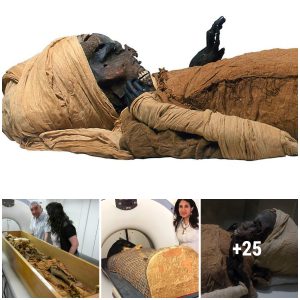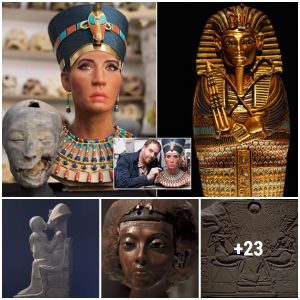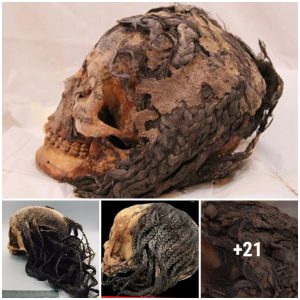Jan Bartek – Icestech.info – While excavating at the Roman legionary camp in Novae, northern Bulgaria, archaeologists unearthed an ancient “refrigerator” and some unique coins that shed more light on the life in the region and the ancient settlement.
The “refrigerator” is a container of ceramic plates recessed under the floor, which legionnaires used to store food. Its contents were fragments of vessels and animal bones.

Ancient fridge found in Bulgaria. Credit: P. Dyczek
The preserved small bone fragments show signs of heat treatment, meaning the meat stored in the container was baked. There were also bits of charcoal and a fragment of a small bowl. Scientists say it cannot be ruled out that these are the remains of the censer used to drive away insects from the food stored there.
Novae was a legionary camp built in the 1st century A.D .by the Roman legion as a permanent base of the 1st Italian Legion on the Lower Danube Lima (empire) in the province of Mesia Inferior. In 69 A.D., it was decided to strengthen the imperial border because of a fear of neighboring Dacia. Therefore, the new legion, which was formed only by the inhabitants of Italy, was transferred to the Danube – the 1st Italian Legion was stationed in Novae until the middle of the 5th century.
Polish scientists have explored the camp area for several decades with Bulgarian partners. Professor Piotr Dyczek led the team from the Antiquity of Southeastern Europe Research Center, University of Warsaw, and made several discoveries. Among them is a built-in element, which the scientist called a “refrigerator.” It was located in a room of military barracks.
Discoveries Of Ancient ‘Refrigerators’ Are Rare
It is not often archeologists find ancient fridges. Worth mentioning is that some years ago, an archaeology team working near the Swiss city of Basel came across ancient deep shafts built by ancient Romans at Augusta Raurica. Researchers suggested these four-meter deep structures could have been ancient refrigerators. The shafts were filled with snow and ice during winter and then covered with straw to keep the space cool into the summer. This then allowed for everything from cheese to wine – and even oysters – to be preserved during warm weather.
Our ancestors thought a lot about how to keep food cold. Modern refrigerators and freezers that we possess today are by no means new inventions. Ancient people had their technological ideas, and they were similar to ours. The yakhchals (‘yakh’ means ‘ice’ and ‘chal’ means ‘pit’), for example, are ancient “refrigerators” used to store ice and other food items.

Yakhchal in Yazd Province. Credit: Pastaitaken – CC BY-SA 3.0
The yakhchals were mostly used in Persia in about 400 B.C. Ancient Persian engineers mastered the technique of storing ice in the middle of summer in the desert. People harvested ice and snow even much earlier, in 1000 BC. There is also written evidence that ancient Chinese, Jews, Greeks, and Romans had a similar tradition.
There is, without a doubt, still much to learn about how ancient people dealt with food storage.
Unique Coins And Water Supply Systems Shed More Light On The Ancient History Of Novae
Excavations at Novae have also resulted in the discovery of several unique coins dating to the time of the Goths‘ raid in the middle of the 3rd century until the beginning of the reign of Constantine the Great (beginning of the 4th century).
a collection of several dozen coins. Much of it comes from the strata covering the period from the Goths’ raid in the middle of the 3rd century until the beginning of the reign of Constantine the Great (beginning of the 4th century).
Archaeologists have also uncovered entire strings of walls from that period and the remains of the entire house. Querns, weaving and fishing weights, spools, cavities with bones, and fragments of vessels were discovered there.
“During this time, Novae slowly developed into a civilian city. Also, thanks to the latest finds, we have obtained enough data to be able to recreate this fragment of the history of this ancient settlement, which until now was shrouded in mystery for us,” Professor Dyczek told PAP.
He also drew attention to the find in the form of fragments of entire water supply systems made of both ceramic and lead pipes. The scientist emphasized that lead pipes are rarely preserved in our times because the raw material from which they were made was valuable and therefore reused.

Water supply system under an ancient Roman bath. Credit: P. Dyczek
As Dr. Martin Lemke from the Center for Research on the Antiquity of Southeastern Europe of the University of Warsaw explained to PAP, fragments of the sewage water supply system in Novae prove that the Roman army attached great importance to ensuring constant access to water as the most important basic necessity. Soldiers could use it, among others, in thermal baths. In the case of Novae, the catchment was the source of the Dermen River, as the nearby Danube was not suitable for drinking water due to too much pollution. The designers took great care that the supplied water was of good quality.
See also: More Archaeology News
The almost 10 km long aqueduct supplied water to two large reservoirs located in front of the camp. From there, it was distributed to individual recipients with a complex network of water pipes and canals and then discharged to the Danube.
Written by Jan Bartek – Icestech.info Staff Writer





